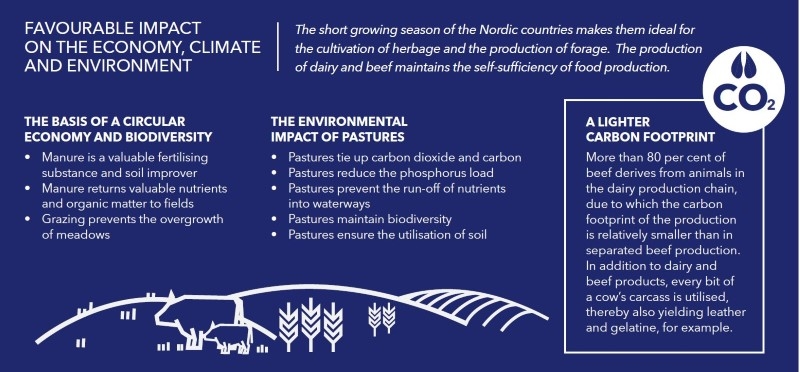Fresh air, abundant water resources and a high level of expertise available make the Baltic Sea region an excellent place for responsible food production. We can make more environmentally sustainable choices when buying locally produced meat in the Nordics.
Special Nordic conditions for beef production
In the Nordics we have good conditions for beef production. Did you know that:
- Beef production consumes a lot of water, but it is not a problem in the Nordic countries because we have abundant water resources.
- Overgrazing is no problem as our cattle are suitably sized for their field areas when grazing.
- There is hardly any deforestation as the area suitable for feed production is sufficient in the Nordic countries. Foreign feed raw materials, such as imported soy, are hardly needed to supplement domestic feed crops.
- Roughage is natural food for cattle and it keeps the cattle’s rumen in good condition. A wellbeing cattle needs hay.
There are plenty of fields where the soil is only suitable for grass cultivation
- Perennial grass areas are efficient in nutrient binding, like phosphorous (P) and nitrogen (N). When grass fields are not ploughed, the risk of nutrient leakage into waters is low.
- Perennial grass also acts as a carbon sink*, binding significant amounts of carbon to the soil.
- Animal manure from cattle farms is suitable for fertilization for next harvest while improving field quality.
- From the point of view of biodiversity (incl. numerous plant and insect species) and environmental impact assessment, cattle and grass are essentially one.
Did you know: Meat and milk production is highly integrated in the Nordics, most of the meat come from dairy breeds.







